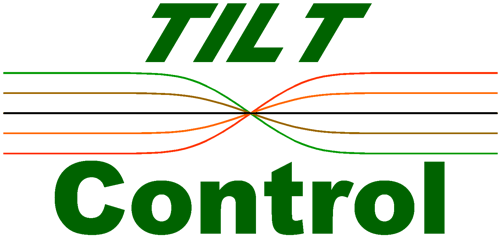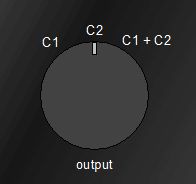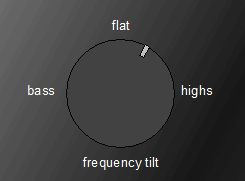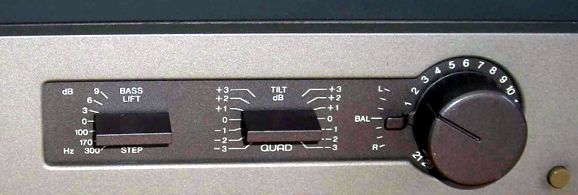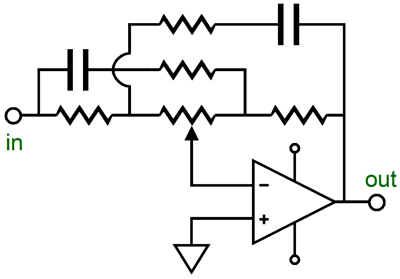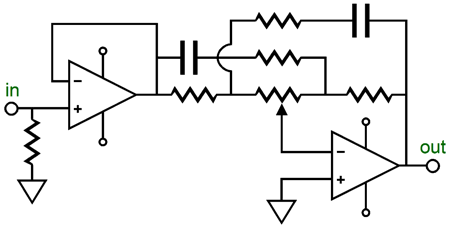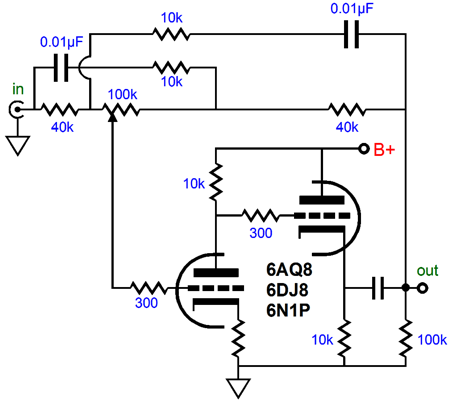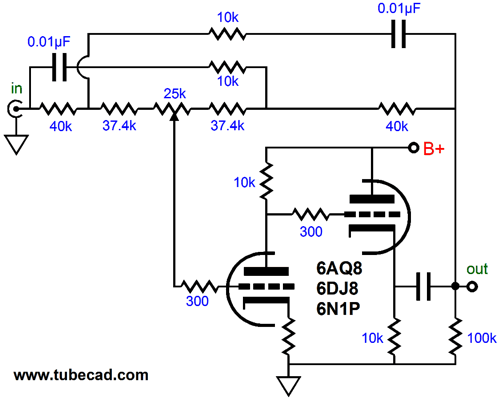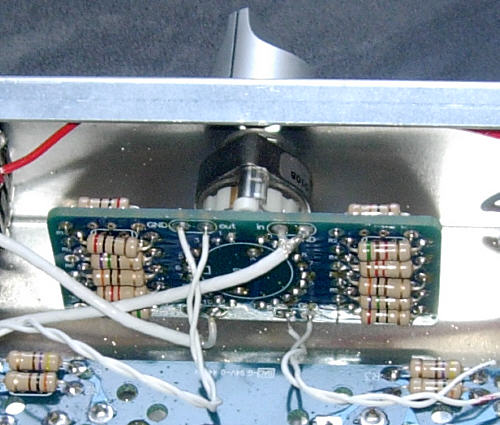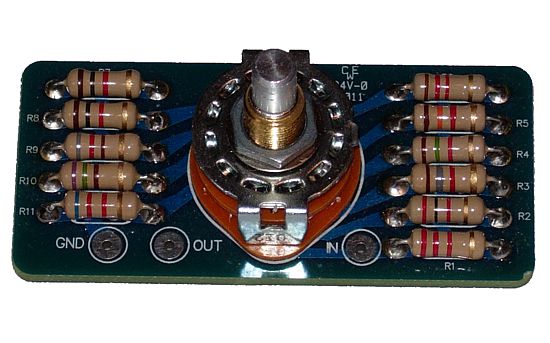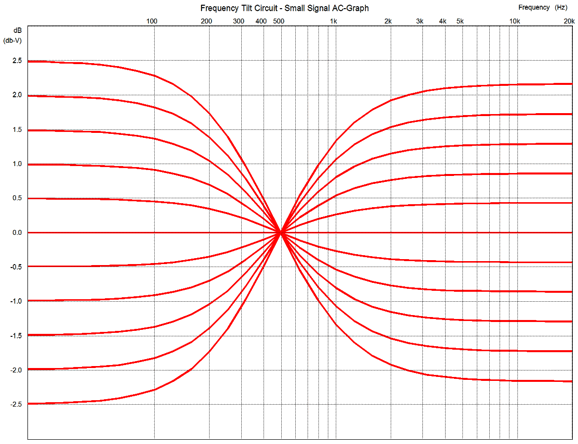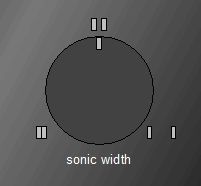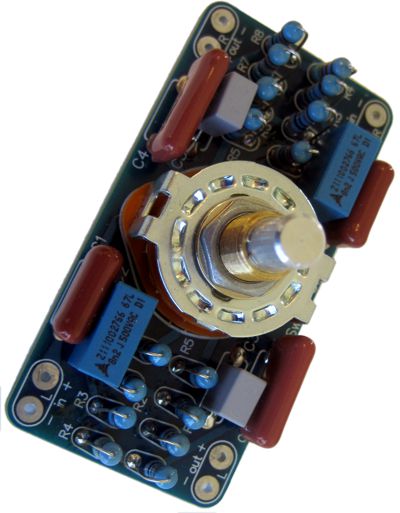| John Broskie's Guide to Tube Circuit Analysis & Design |
| 23 June 2013
Missing Sonic Controls Fortunately, extremely fortunately, I began reading essays before I was forced to do so, which allowed me to sidestep the usual academic inoculation against essays that most receive in school. Much like the routine inoculation against poetry and Shakespeare that most young students receive, a small dosage of essays by Francis Bacon or Emerson is forced on the unwilling child, so that later in life he has grown immune to the essay's rewards and pleasures. Indeed, for me, few things beat a good essay. They are bite-sized and cerebral nourishing. They are like having a ten minute conversation with someone much smarter than yourself. In contrast, few things irk me more than full-length books that should have been only thirty pages of a tightly written essay. The dictionary tells us that an essay is a short literary composition on a single subject, usually presenting the personal view of the author. There were essays long before the name "essay" was applied to them, just as there were philosophers and scientists before the words "philosophy" and "science" existed. The altogether brilliant Michel Montaigne (1533–1592) was the first to label his short, personal, tentative, probing, reflective writings as "essays."
But my abiding respect and admiration of Montaigne only makes me more hesitant to categorize my hasty missives as "essays;" thus, my present preference for the ugly and ill-defined word "blog." Well, the piece that I wrote over a decade ago should be called an essay, not a blog post, in my view, as it is pretty darn good. The topic was the missing sonic controls. Missing from where? Why, from our stereo systems, where else? If you haven't read the essay, Missing Sonic Controls, I recommend that you do now, as I don't plan on restating the same material here. Here is how I put it back then:
Anyone who has read my audio ramblings and seen my PCBs that hold dual, separate coupling capacitors and the accompanying capacitor-selector switches that allow choosing between them, knows that I promote as much flexibility and choice as possible. Why? Besides my intrinsic libertarian inclination, I know that musical recordings and musical tastes and listening moods differ wildly; and that one size can never truly fit all. I like orange juice in the morning and port at night—never the reverse. And late at night, smooth sound usually wins over the bright and detailed, but not always. If the music is simple and uncluttered, I quite like the burnished softening that some coupling capacitors impart; but with complex, instrument-filled music, I prefer a more detailed sounding coupling capacitor.
But the choice of coupling capacitor only imparts something of a change in texture, not an actual shift spectral balance. Yes, some coupling capacitors sound bright and other sound dull, but both will measure flat in frequency plots. Changing the frequency balance between lows and highs requires more than just part substitutions: it will require true frequency equalization.
Tilt Control
As tone controls are rare and as the tilt control is a special type of tone control, it is very rare. The only piece of hi-fi that held one that I know of was the lovely Quad 34.
At the left is a bass boost/cut control; in the center, a tilt control; and at the right the volume and balanced controls. Fantastically elegant, don't you think? Here is what Ken Rockwell had to say about it:
The tilt control used in the Quad 34 preamp was an active affair that relied on a negative feedback loop and a high-gain amplifier to make the frequency-selective tilt possible.
When the potentiometer is centered, no tilt occurs. As the potentiometer is adjusted to the right, the highs go up and the lows go down. As the potentiometer is adjusted to the left, the lows go up and the highs go down. The math behind selecting the resistor and capacitor values is scary looking but it's not all that difficult. The EE web site, www.edn.com, has a good article on designing a Quad tilt control by Mr. Francesco Balena. Most would use an OpAmp or a discrete-parts, solid-state amplifier, but a tube-based Quad tilt control could be made with either a CCDA or Aikido gain stage. What about the grounded-cathode amplifier or an SRPP circuit? I wouldn't use them, as their output impedance is too high, which will interfere with the tilt control's network of capacitors and resistors, throwing off the results.
In fact, the Quad tilt control circuit must be driven by a low-impedance signal source, such as a CD player or stand-alone DAC, not a volume potentiometer or a high output impedance tube circuit.
One problem with the above circuit is that it offers too much boost and cut; and our goal is subtle shifts in tonal character. The following variation uses two extra resistors (37.4k) to limit the maximum boost and cut to about 2.5dB.
An even better solution is to not use a potentiometer at all. Why not? Potentiometers, even the best of them, stink. They become noisy; they break contact; they don't track between sections, they don't center. The alternative is to use a many-position rotary switch. A near perfect choice would be the Elma 11-position, dual pole, hard-gold rotary switch that I used in my A4 attenuator and in my stereo 11-position series stepped attenuator. Sadly, I haven't had the courage to buy more Elma switches, as I would be required to purchase thousands of dollars' worth of them. The switch holds two poles, so only one is required for stereo use. With the following resistor values, 0.5dB steps are possible. The 37k resistor at the right must be set off the PCB, as the PCB only holds 22 resistors (11 per channel).
Another possibility is using the GlassWare Trim-1 control, which is a mono series stepped attenuator, with 11 positions. Because it is a mono design, one per channel would be needed, but then it cost a fraction of what the Elma-based attenuator costs.
Using either switch in this setup yields the following graph. The center position is wonderfully flat. In addition, the output is unity gain, but inverted.
Now, if no gain is offered by this circuit, would this make a good line-stage amplifier? Probably not. To be immodest, the Tetra phono stage might make a wonderful test bed for this circuit, as the four CCDA gain stages could be put to good use. For example, one stage, the last stage, can be used as the tilt control; and the other stage can be used as a gain amplifier, with the added chance to impose more sonic control. In the Missing Sonic Control essay and in blog number 33, I covered simple sonic width control that would allow adjustment of the perceived stereo image width, making it either wider or narrower.
One complaint that I often hear about headphone listening is that it offers too much stereo separation. True enough. But then, some recordings could benefit with more separation, even with headphones. If the input triodes' plates are tied together through a resistor, the two channels will blend together, creating a narrower stereo image. Conversely, if the input triodes' cathodes are tied together through a resistor, the two channels will pull apart, creating a wider stereo image. Once again, a rotary switch would be ideal, say one with five positions and four poles. At the center position, neither plates nor cathodes combine. As we click clockwise, the cathodes would find less and less resistance between them. As we click counterclockwise, the plates would find less and less resistance between them. Why four poles and not just two? Two cathodes and two plates equals four connections. Putting it altogether and adding an isolation transformer at the input, just after the selector switch, would allow picking the phase and create something like the following, which is more than just a line-stage amplifier, being closer to an audio palette.
Next Time
//JRB |
E-mail from GlassWare Customers
High-quality, double-sided, extra thick, 2-oz traces, plated-through holes, dual sets of resistor pads and pads for two coupling capacitors. Stereo and mono, octal and 9-pin printed circuit boards available.  Aikido PCBs for as little as $24 http://glass-ware.stores.yahoo.net/
Support the Tube CAD Journal & get an extremely powerful push-pull tube-amplifier simulator for TCJ Push-Pull Calculator
TCJ PPC Version 2 Improvements Rebuilt simulation engine *User definable
Download or CD ROM For more information, please visit our Web site : To purchase, please visit our Yahoo Store: |
|||
| www.tubecad.com Copyright © 1999-2013 GlassWare All Rights Reserved |
